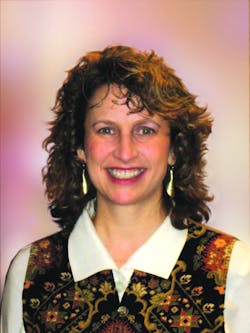
"Every year when Breast Cancer Awareness Month (October) comes around I am a saddened and surprised that thermography hasn't become more popular," wrote Christiane Northrup, MD, in an October 12, 2010 article that appeared in the Huffington Post (http://huff.to/bWsySY). The article, titled The Best Breast Test: The Promise of Thermography, noted that "...many [doctors] believe that a mammogram is the best test for detecting breast cancer early. But it's not. Studies show that a thermogram identifies precancerous or cancerous cells earlier, and produces unambiguous results, which cuts down on additional testing—and it doesn't hurt the body."
Northrup, an internationally known practicing physician whose books include the best-selling Women's Bodies, Women's Wisdom (1994, Bantam), says she prefers thermography (a.k.a., digital infrared thermal imaging, or DITI) over standard mammography because she would "rather focus on breast health and ways to prevent breast cancer at the cellular level than put the emphasis on testing and retesting until you finally do find something to poke, prod, cut out or radiate."
Of course, a major reason the status quo remains is that imaging centers have invested a great deal in standard mammography in terms of equipment and human resources. One of the many positive aspects of optical equipment in general, though, is that they are comparatively inexpensive—and easy to use. During the recent H1N1 scare, numerous airports and other centers of travel quickly installed and began operating thermal imaging cameras as a means for scanning passengers efficiently, cost-effectively and, of course, noninvasively.
The technology is also useful for detecting certain other cancers, as well as circulation problems, inflammation (e.g., "tennis elbow"), and additional conditions. James B. Mercer Tromsoe's website for The Northern Norwegian Centre for Medical Thermography gives a good overview of applications (www.medical-thermography.com).
Actually, 2010 is an important year for thermography, as it marks a century since the first infrared photograph was published. That photo was made by Professor Robert Williams Wood, who presented his work to the Royal Photographic Society in October 1910.
A news release issued this fall by FLIR Systems Ltd (Kent, UK) said that Wood's groundbreaking work in optics and spectroscopy made possible modern-day thermal imaging and thermography, and says that "the closing summary from the first medical thermography conference held in New York in 1963 remains as valid today as was 47 years ago."
That statement? "All that has been revealed is nothing by comparison with what has yet to be discovered."
Indeed. What if we were to discover that by challenging our physicians to use thermography, we could help turn the tide toward less invasive, more sensitive screenings? It is certainly worth a try.
About the Author

Barbara Gefvert
Editor-in-Chief, BioOptics World (2008-2020)
Barbara G. Gefvert has been a science and technology editor and writer since 1987, and served as editor in chief on multiple publications, including Sensors magazine for nearly a decade.